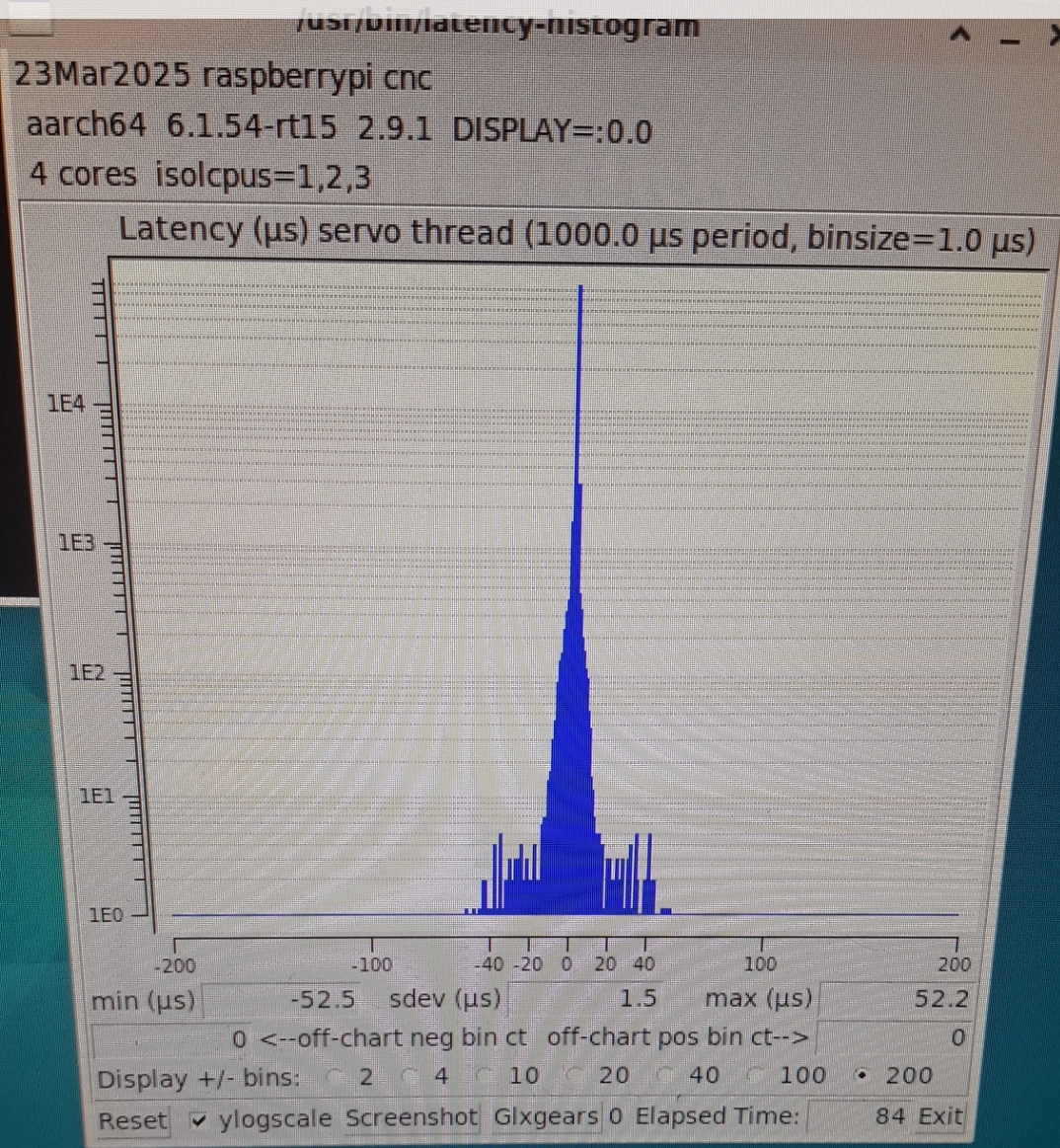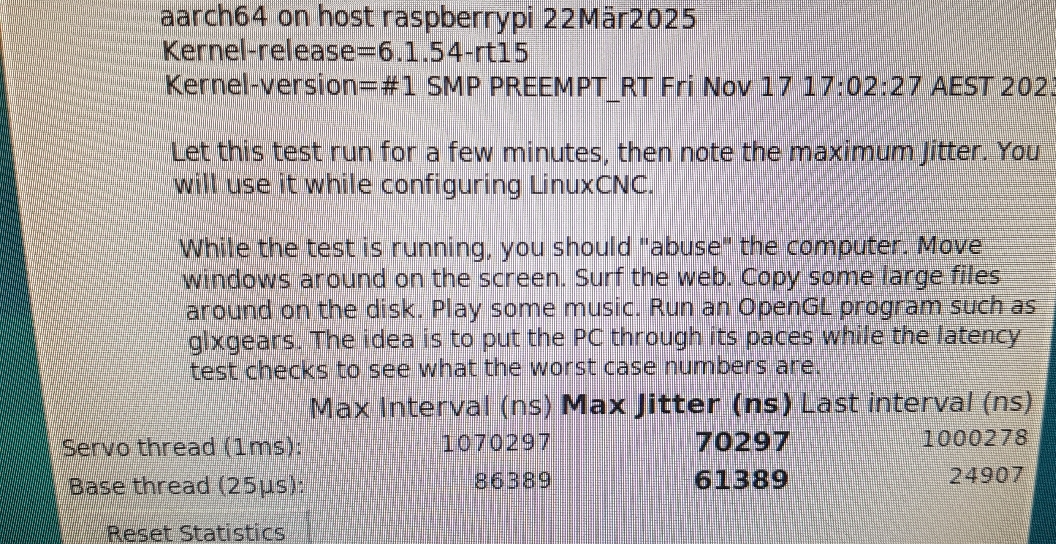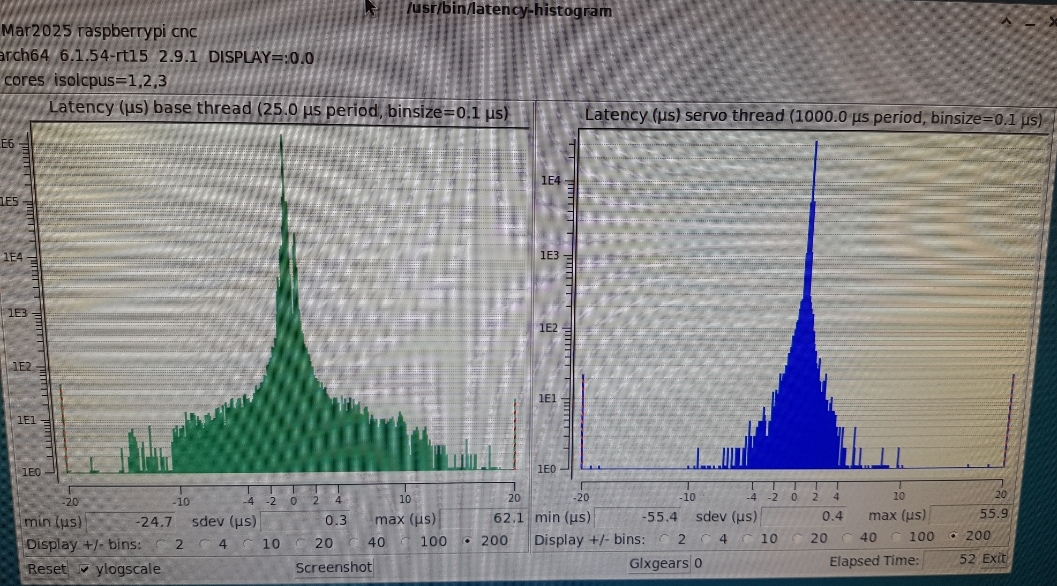Search Results (Searched for: raspberry pi 3)
- unknown
- unknown
23 Mar 2025 15:04
Replied by unknown on topic Raspberry Pi 5 CNC configuration software
Raspberry Pi 5 CNC configuration software
Category: Show Your Stuff
- tommylight

23 Mar 2025 11:30
Replied by tommylight on topic Raspberry Pi 4 and bad latency.. SOLUTIONS?
Raspberry Pi 4 and bad latency.. SOLUTIONS?
Category: Installing LinuxCNC
- hitchhiker
- hitchhiker
23 Mar 2025 08:13
Replied by hitchhiker on topic Raspberry Pi 4 and bad latency.. SOLUTIONS?
Raspberry Pi 4 and bad latency.. SOLUTIONS?
Category: Installing LinuxCNC
- Aciera

23 Mar 2025 07:52 - 23 Mar 2025 07:53
Replied by Aciera on topic Raspberry Pi 4 and bad latency.. SOLUTIONS?
Raspberry Pi 4 and bad latency.. SOLUTIONS?
Category: Installing LinuxCNC
- hitchhiker
- hitchhiker
23 Mar 2025 07:47
Replied by hitchhiker on topic Raspberry Pi 4 and bad latency.. SOLUTIONS?
Raspberry Pi 4 and bad latency.. SOLUTIONS?
Category: Installing LinuxCNC
- rodw

23 Mar 2025 07:27
Replied by rodw on topic Raspberry Pi 4 and bad latency.. SOLUTIONS?
Raspberry Pi 4 and bad latency.. SOLUTIONS?
Category: Installing LinuxCNC
- hitchhiker
- hitchhiker
23 Mar 2025 06:35
Replied by hitchhiker on topic Raspberry Pi 4 and bad latency.. SOLUTIONS?
Raspberry Pi 4 and bad latency.. SOLUTIONS?
Category: Installing LinuxCNC
- diy
- diy
23 Mar 2025 02:33
Raspberry Pi 5 CNC configuration software was created by diy
Raspberry Pi 5 CNC configuration software
Category: Show Your Stuff
- rodw

22 Mar 2025 21:25
Replied by rodw on topic Raspberry Pi 4 and bad latency.. SOLUTIONS?
Raspberry Pi 4 and bad latency.. SOLUTIONS?
Category: Installing LinuxCNC
- tommylight

22 Mar 2025 16:52
Replied by tommylight on topic Raspberry Pi 4 and bad latency.. SOLUTIONS?
Raspberry Pi 4 and bad latency.. SOLUTIONS?
Category: Installing LinuxCNC
- hitchhiker
- hitchhiker
22 Mar 2025 14:25
Replied by hitchhiker on topic Raspberry Pi 4 and bad latency.. SOLUTIONS?
Raspberry Pi 4 and bad latency.. SOLUTIONS?
Category: Installing LinuxCNC
- hitchhiker
- hitchhiker
22 Mar 2025 13:59
Replied by hitchhiker on topic Raspberry Pi 4 and bad latency.. SOLUTIONS?
Raspberry Pi 4 and bad latency.. SOLUTIONS?
Category: Installing LinuxCNC
- tommylight

22 Mar 2025 13:56
Replied by tommylight on topic Raspberry Pi 4 and bad latency.. SOLUTIONS?
Raspberry Pi 4 and bad latency.. SOLUTIONS?
Category: Installing LinuxCNC
- hitchhiker
- hitchhiker
22 Mar 2025 13:34
Raspberry Pi 4 and bad latency.. SOLUTIONS? was created by hitchhiker
Raspberry Pi 4 and bad latency.. SOLUTIONS?
Category: Installing LinuxCNC
- Hakan
- Hakan
22 Mar 2025 09:03
Time to create page: 1.353 seconds




